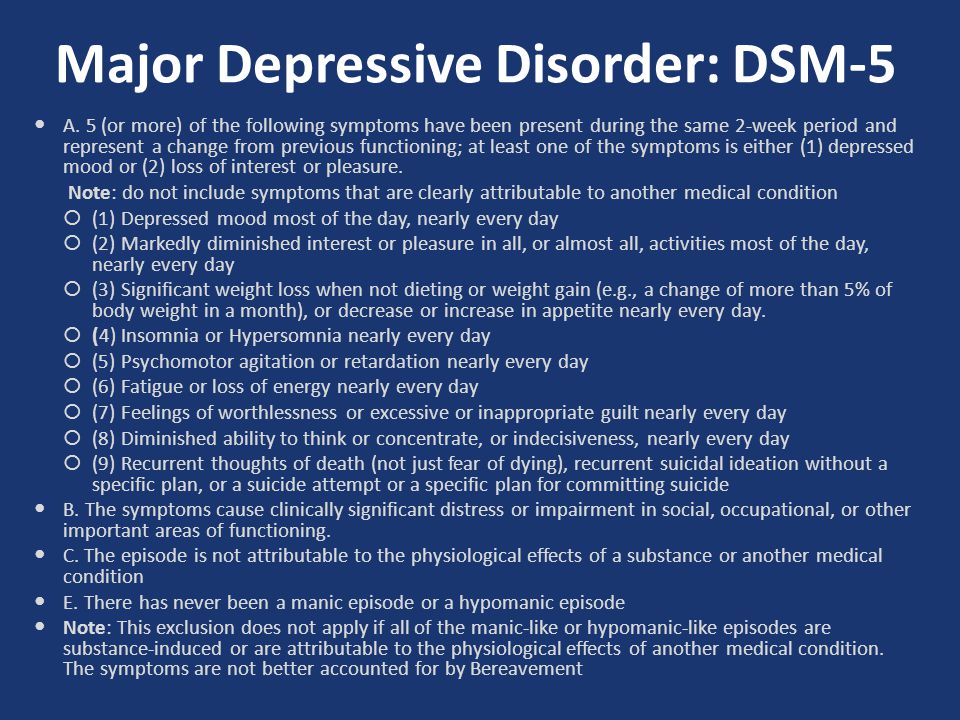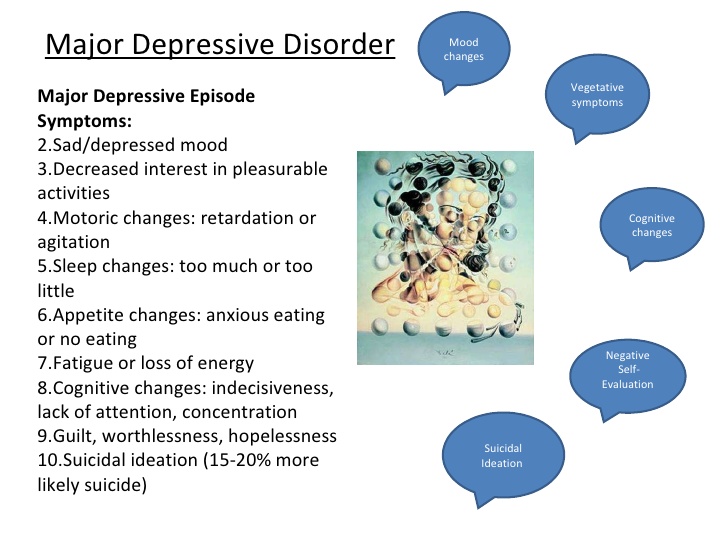Mental Depression
Major Depressive Disorder refers to the most severe forms of depression, where the person exhibits depressed mood and anhedonia. Many of other above mentioned core symptoms of depression like loss of sleep or hypersomnia etc. is also present. Most of these symptoms must be present all day and nearly every day for two consecutive weeks for diagnosis to be applicable. The most severely depressed people may experience psychotic symptoms including delusions and hallucinations and usually, symptoms are mood congruent i.e. in live with the person’s depressed thinking. Most major Mental Depression Disorder clear up even without treatment in a matter of months and the average duration of untreated episodes is between 8 – 10 months. The disorder can begin at any age but the most typical period is mid – 20s.

Sub Types of Major Depressive Disorder (MDD) –
Differences in the pattern of Major Depression Disorder and their predominant symptoms have led diagnosticians to propose subcategories of MDD and these are –
- Melancholic Type –
Its main characteristics are –
- Significant Loss of Appetite and Weight
- Severe Anhedonia
- Inappropriate or Excessive Guilt
- Psychomotor Retardation on Agitation
- Early Morning Awakenings.
- Chronic Type –
It refers to the cases of Major Depression Disorder (MDD) that have lasted continuously for two years.
- Atypical Type –
They show pattern of symptoms that are different from traditional symptoms. Rather than losing their appetite on having difficulty in sleeping these people eat more often gaining lot of weight.
- Catatonic Type –
It is characterized by extreme psychomotor disturbances. The person may stay fixed in bizarre postures, sometimes showing waxy flexibility or may engage in agitated purposeless behavior. They may mimic every movement someone else has made – echolalia on engage – a parrot like repetition of other peoples speech.
- Seasonal Affective Disorder –
Its specific feature is that Mental Depression Disorder (MDD) has a clear seasonal pattern. Usually seen in locations where winter days are short and exposure to day light is limited. Symptoms include low energy, extreme fatigue and greater than normal amounts of sleeping.
- Post-Partum Type –
A depressive episode begins within 4 weeks of the birth of a child and the symptoms are similar to atypical depressive disorder, but they tend to fluctuate more of them and frequently accompanied by attacks of severe anxiety.
- Dysthymic Disorder –
Diagnosis of Dysthymic Disorder is reserved for individuals who have had difficulties with chronically depressed mood and related symptoms for at least 2 years. It develops more gradually than major depression and typically doesn’t involve acute disruption of person’s life. People often feel inadequate and brood about the past.
- Adjustment Disorder with Depressed Mood –
It is behaviorally indistinguishable from dysthymia but differs from it, in that it does not exceed six months in duration and it requires the existence of an identifiable psychosocial stressor in client’s life within three months before the onset of depression. Click to Read: ‘Doctor! I am going to commit suicide!’




Recent Comments